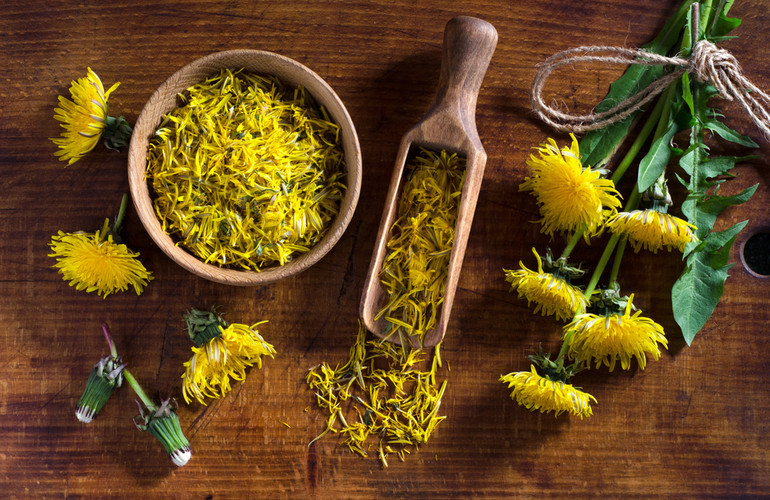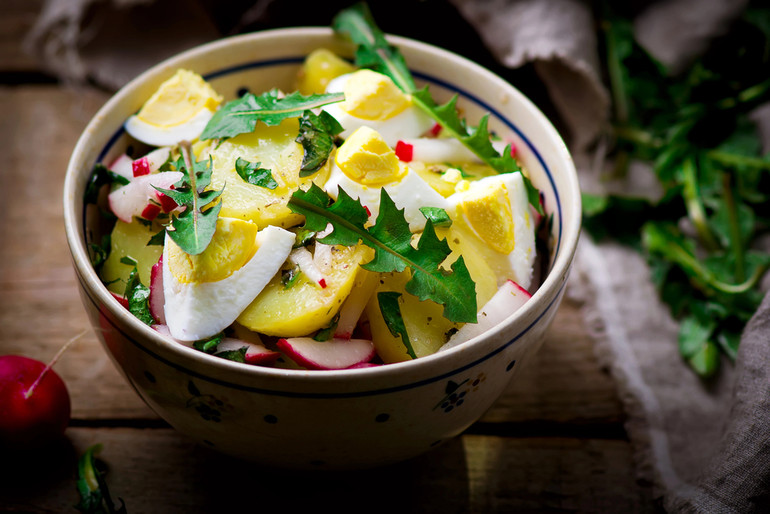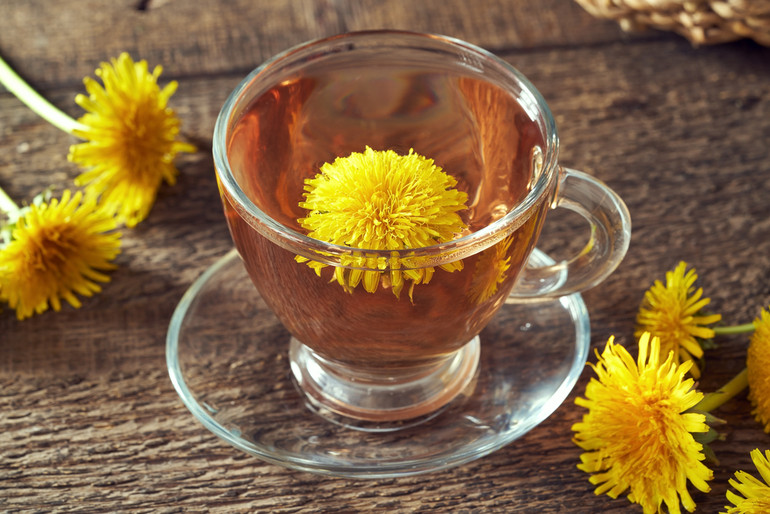Can I eat dandelion and how to cook it: recipes

In the spring, a medicinal dandelion – a perennial herb that not only pleases the eye, but can also become a delicious addition to the diet.
Until dandelion gave fluffy fruits with seeds, you can try to marinate Flowersmake a salad of leaves or ferment the umbilica. However, some spring plant can hurt.
Nutritionist Lyudmila Pylypyuk She explained to « Ukrainian Truth. Life », what is useful dandelion, how to use it and who is contraindicated.
How useful is dandelion?
All parts of dandelion are edible
Photo: Eladstudio/Depositphotos
Dandelion is considered an edible and medicinal plant containing bitterness (substances of vegetable origin with a pronounced bitter taste) and improves digestion.
Dandelion contains vitamins A, WITH, K and e, a small amount of B vitamins, antioxidants (in particular, beta-carotene, polyphenols), folic acid, terpenoids, polysaccharides. Green dandelions also have several minerals, including iron, calcium, magnesium and potassium in small quantities.
The bitterness stimulates gastric juice secretion and improve appetite and have a choleretic effect. This may be useful in some diseases of the gastrointestinal tract eg – At gastritis with reduced acidity. At the same time, the increased acidity is incompatible with a lot of bitterness, says dietitian Lyudmila Pylypyuk.
There are many statements on the Internet about the various healing properties of dandelions. However, according to the doctor, there are no thorough studies in the world in the world the effects of dandelion on the intestinal microbiota or the treatment of gastrointestinal diseases.
The plant should be used as an interesting and aesthetic supplement to the diet, not as a panacea from disease.
How to use dandelion?

Dandelion root can be fried, flowers are raw or fermentation, and leaves – add to the salad instead of arugula
Photo: Zoryanchik/Depositphotos
It is impossible to collect dandelion on the route, along roads or trails, near industrial sites or in the middle of the city, as the plant collects dust and harmful substances from exhaust gases.
« Dandelion will collect everything that comes out with car exhausts from cars, including heavy metals that are very toxic. Damage will be much greater than the benefits of those components we expect »– says the dietitian.
It is better to cut dandelions in your garden/in the garden, buy salad kits in supermarkets or with farmswhere these flowers are grown.
Before eating dandelion, necessarily required wash soak it in cold water for 10-30 minutes.
This is necessary to clean the plant of dirt, dust, insects and any trace of animals (recall, cats are carriers of toxoplasmosis). Also, after soaking, the leaves will become less bitter.
Dry the washed plant. Prepare or store in the container in the refrigerator.
The nutritionist adds that there is no study, how much dandelion consumed can be dangerous.
How to cook dandelions?
All parts of the plant can be eaten. Dandelion root is often dried and tea is made from it, but you can eat it whole, like other root crops. Flowers can be added to a salad or fermentation with the navels and the leaves are added to the salad with the other Green.
Leaf
”Young green leaves, when the flower has not yet turned into a white « hat » is best for use in salads as a source of fiber and nutrients « , – says Lyudmila Pylypyuk.
It is enough to take a handful of dandelion for salad. Alternatively, you can take 5-7 dandelion leaves, mix with other leaf salad and other components of the dish.
Dandelion leaves are something on the border between the arugula and wormwood by the number of bitterness. To prepare dandelion, a nutritionist advises to combine bitter elements of the plant with acids. AND roots and dandelion leaves can be boiled with citric acid or vinegar.
And in the salad of raw leaves dandelion can be added boiled eggs, beets, potatoes, meat. Season with lemon juice, apple cider vinegar sauce with Dijon mustard and more.
« In France, Belgium and Spain, whole dandelions are grown and cultivated. There is a Lyon salad of raw dandelion leaves in France. In the eastern countries, boiled leaves are more used in the Eastern countries, » Says Lyudmila Pylypyuk.
Roots
Dandelion roots are similar to the root of chicory, says Lyudmila Pylypyuk. They can be cleaned and frying – They are caramelized by inulin But they go well with vegetables or meat.
« Also in some countries the roots are dried at high temperatures, ground and used as a drink with a coffee taste »– adds a nutritionist.
Flowers and buds

Dandelion can be added to tea, dried and make broths
Photo: Madeleinesteinbach/Depositphotos
Dandelion flowers and « umbilical cord » can be consumed with raw for cooking teas, salads, used as decor or marinated.
« Buds and inflorescences can be marinated like capers or as a pickled cucumber that is useful for our microbiome ”, – says Lyudmila Pylypyuk.
The yellow petals can be trimmed, dried and added to tea. Also dandelion are very rich in pollen, and they are delicious honey.
Who should not eat dandelion?
Lyudmila Pylypyuk does not recommend to use dandelion for people who are exacerbated diseases of the gastrointestinal tract, Cholelithiasis, Increased acidity of the stomach. Also the doctor advises to avoid this plant Pregnant and young children.
« We do not recommend a priori to use dandelions pregnant, children under three years of age and people in acute conditions because there were no relevant studies and we do not exclude this group from a risk group »– says Ludmila.
If a person pollen allergydo not use dandelions, because they have a lot of sticks. Generally if you notice the symptoms Allergiesyou should go to the doctor and find out what allergens provoke them.
We will remind, we have named earlier 8 reasons to eat onionsand in the Ministry of Health made a list foods that can be eaten overnight.







